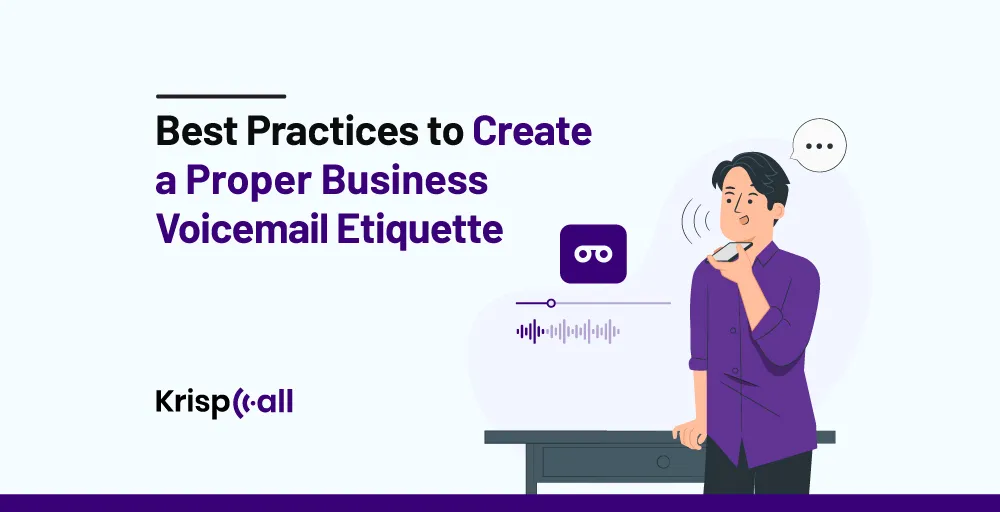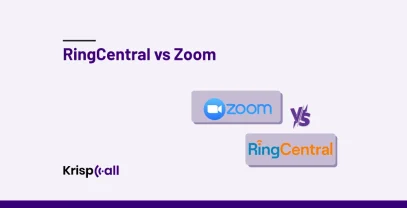Are you tired 😩 of clients hanging up before leaving a message because your voicemail doesn’t sound good enough and seems never-ending?
Is your voicemail making potential partners hit the ‘disconnect’ button? This means your voicemail has something missing and leads are not able to gain customer’s first impression.
In this blog post, you’ll learn the best practices to create a proper business voicemail to leave the right impression every time.
What is Business Voicemail Etiquette?
Business Voicemail Etiquette is the standard process of creating, receiving, or leaving voicemails. It refers to good manners when dealing with voicemail for your work.

By practicing good business voicemail etiquette, you’re not just leaving voicemails; you’re leaving a positive and professional impression😊 on those you interact with.
Example of a good voicemail: “Hello, you’ve reached [Your Name]. I’m currently away from the phone or on another line. Your call is important to me, so please leave your name, number, and a brief message, and I’ll get back to you as soon as possible. Thank you!”
Example of bad voicemail: “Uh, hey, this is, um, [Your Name]. I can’t take your call right now, I guess. Leave a message or something, and I’ll call back… maybe.”
11 Best Practices to Create Proper Business Voicemail Etiquette in 2024
Having a good business voicemail isn’t just about sounding professional, it’s like having a helpful assistant on the phone. It keeps customer relationships strong, makes communication clear, and saves time for everyone. A well-maintained business voicemail ensures you can respond quickly and keep the customer happy.
So, let’s learn the 11 best practices to create a proper business voicemail etiquette that leaves a positive and professional impression on callers and clients.
1. Clear and Concise Greetings
Clear and concise greetings are the most essential part of effective business communications in the corporate world.
Think of it as the first impression in a conversation, start with a friendly formal greeting, and identify yourself and your company with a proper voicemail script.
A brief, to-the-point greeting ensures that callers quickly understand who they’ve reached, what to expect, and how to proceed. Use simple language to convey important information, and avoid unnecessary details that might confuse callers📞.
✅ Do: Start with a warm and friendly greeting, Identify yourself clearly, State your purpose for calling, Be concise and to the point, End with a polite closing
❎ Don’t: Include unnecessary information, Use a casual or unprofessional tone
Example of a good voicemail: “Thank you for calling [Company Name]. You have reached [your name] at extension [extension number]. I am currently unavailable, but I will return your call as soon as possible. Please leave your name, number, and a brief message after the tone.”
Example of bad voicemail: “Hi there! This is [your name]. I’m probably not available right now, but I’ll get back to you as soon as I can. Leave a message after the beep, and I’ll try to get back to you today. Thanks!”
2. Speak Slowly and Clearly
Talking slowly and clearly in your work voicemails is important to ensure your voice message gets through smoothly. It’s like having a friendly chat rather than a rush. It helps to avoid any confusion and makes you sound more professional.
While recording your voicemails, find a quiet spot, take your time, add a little pause when needed, and listen back to your messages.
It makes things much clearer and shows you respect the other person’s time.
✅ Do: Speak at a moderate pace, Pause between sentences, Avoid using filler words like “um” and “uh.”, Smile as you speak, and Practice your voicemail message before you record it.
❎ Don’t: Speak too quickly without maintaining a steady pace, Move quickly without giving listeners time to process information, Skip accurate pronunciation, and rush through words
Example of a good voicemail: “Thank you for calling [Company Name]. You’ve reached [Your Name], [Your Title]. I’m currently away from my desk, but I’ll be sure to check my voicemail regularly. In the meantime, please leave your name, number, and a brief message after the tone. I’ll get back to you as soon as possible.”
Example of bad voicemail: “H’ey there, dis is [Your Name], [Yur Title]. I’m not avail’ble right now, but I’ll get back to you later. Leave a message affer duh beep.”
3. Include Relevant Information
In a business voicemail, relevant information helps the listener understand your call’s purpose for a proper response. So, while leaving a voice message, make sure to include only the relevant information that truly helps the clients.
Avoid including unnecessary details that could make the voicemail too long and overwhelming. This ensures that the person understands why you’re calling, making things clear and prompt.
You should include your name and title, company name, reason for your call, contact information, availability & context-specific details.
✅ Do: Be Specific, Prioritize Important Information, Use Clear Language, Include Contact Details, Consider the Audience
❎ Don’t: Use unclear language that may cause confusion, Overload the message with excessive details, Forget to include relevant contact details
Example of a good voicemail:: “Thank you for calling [Company Name]. You’ve reached [Your Name], [Your Title]. I missed your call, but I’m happy to help. Please leave your name, phone number, and a brief message about your inquiry after the tone. I’ll get back to you as soon as possible to discuss your needs and provide you with the best possible solution.”
Example of bad voicemail: “Hi there, this is [Your Name] from [Company Name]. I’m not sure what your call was about, but I’m happy to help if I can. Just leave a message after the tone, and I’ll get back to you when I can.”
4. Avoid Technical Jargon
While making the best voicemail greetings in the workplace, always remember to keep things simple and skip the fancy technical terms.

Using technical jargon might confuse😵 listeners who aren’t familiar with the specific terms, causing frustration and confusion. This could create communication barriers and hinder collaboration.
✅ Do: Use simple and easy-to-understand language, Explain any technical terms, Use examples or comparisons, Talk clearly and at a steady pace
❎ Don’t: Use technical terms that the caller is unlikely to know, Assume that the caller knows everything, Use complex sentences or hard words, Speak rapidly or mumble, hindering clarity
Example of a good voicemail: “Thank you for contacting [Company Name]. I’m [Your Name], and I’m happy to assist you with any questions or concerns you may have about our products or services. Please leave your name, phone number, and a brief message after the beep, and I’ll get back to you promptly.”
Example of bad voicemail: “Thank you for reaching out to [Company Name]. I’m [Your Name], a technical support specialist. Please leave a detailed description of your problem after the tone, and I’ll review your request and provide a solution.”
5. Be Positive and Polite
To create a positive first impression, prioritize being polite and positive. This not only boosts professionalism but also heightens responsiveness and fosters a positive brand image in the corporate world.
Achieve this by employing a warm greeting, maintaining a positive tone, offering genuine compliments, focusing on solutions, and using friendly language.
Ensure your voice message is brief, concludes on a positive note, correctly pronounce names, personalize your message💬, promptly return calls, and consistently follow up.
Being positive and polite in your voicemails lays the foundation for strong and lasting business relationships.
✅ Do: Set a positive and welcoming tone, Use respectful language, Express gratitude for the caller’s time and interest, Provide a clear and concise message
❎ Don’t: Sound rushed or impatient, Use overly formal language, Make promises that you cannot keep
Example of a good voicemail: “Thank you for calling [Company Name]. I’m [Your Name], and I’m always happy to assist our customers. Please leave a message after the tone, and I’ll get back to you as soon as possible. Thanks for your call!”
Example of bad voicemail: “Yeah, this is [Your Name]. I’m not sure what you want, but I’ll call you back if I can. Leave a message after the beep.”
6. Include Office Hours
When you include office hours⌛ in your business voicemail it sets realistic expectations for callers and improves communication efficiency enhancing professionalism. It helps set boundaries, allowing you and your team to maintain a healthy work-life balance.
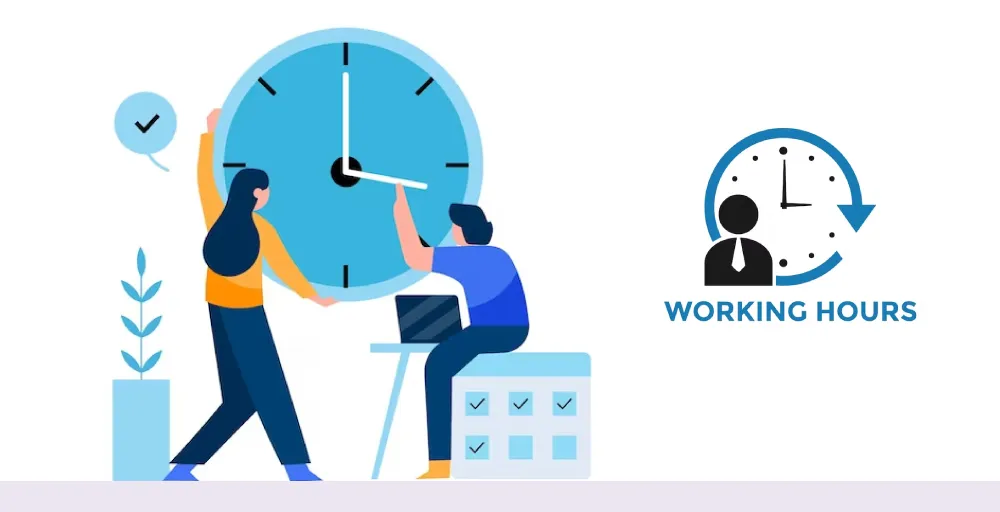
To include office hours, state them prominently in your greeting, be specific about days and times, consider multiple options for different days, and provide alternative contact information.
By following these practices, you can effectively communicate your availability and cultivate a positive professional image.
✅ Do: State your business hours clearly, Provide a second contact number or email address, Offer a callback option
❎ Don’t: Leave an unclear message about your office hours, Assume that the caller knows your business hours, and Leave a message that is negative or unprofessional
Example of a good voicemail: “Thank you for calling [Company Name]. We are open from [Start Time] to [End Time] Monday through Friday. If you want to speak to someone immediately, please visit our website at [Website Address] or leave a message after the tone. Thank you for your call.”
Example of bad voicemail: “Hi there, this is [Your Name] from [Company Name]. We’re available most weekdays, but not always. If you need to reach us, leave a message after the beep.”
7. Regularly Update Greetings
To maintain a positive business image and effective communication with clients it’s crucial to update the business voicemail greetings regularly. It ensures the greetings stay up-to-date, accurately reflecting information like office hours and contact details.
Therefore, update your voicemails quarterly or when significant changes occur. Always try to create a concise, informative, and professionally toned message.
To ensure optimal performance, record it in a quiet environment and test it thoroughly before activating it.
✅ Do: Stay updated with your company’s information, Reflect any changes in your company’s business hours or policies, Promote any special events or promotions that your company is running
❎ Don’t: Neglect to update your greeting frequently, Leave your greeting too long or repetitive, Include irrelevant or outdated information
Example of a good voicemail: “Greetings, you’ve reached [Company Name]. We’re currently away from our desks, but we’ll be happy to return your call as soon as possible. Please leave your name, extension, and brief message after the beep. Thanks for your call!”
Example of bad voicemail: “This is [Your Name]. I’m not available right now, but I’ll try to call you back later. Leave a message after the beep.”
8. Professional Out-of-Office Messages
When you are out of the office or unavailable❌, a well-crafted message helps minimize callers’ confusion and frustration, ensuring they understand your absence and receive the necessary information. It provides a positive and organized image enhancing your professional credibility.
While crafting a professional out-of-office message, identify yourself properly stating your name and title, clearly stating that you are out of the office, and specify the reason for your absence.
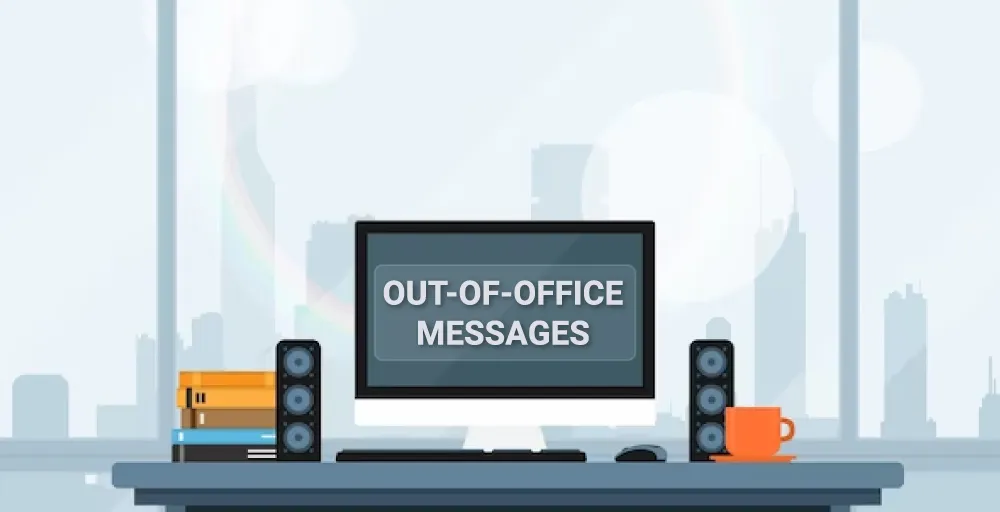
Your out-of-office message is a reflection of your brand. So, by leaving voicemails, you can ensure a positive and professional experience for anyone reaching out to you while you’re unavailable.
✅ Do: State clearly that you are out of the office, Provide an estimated return date, Offer alternative ways to contact you, Thank the caller, and End your message with a friendly and professional tone
❎ Don’t: Leave a blank voicemail, Give a vague or unclear message about your out-of-office status, Sound rushed or impatient
Example of a good voicemail: “Hello, you’ve reached [Your Name] at [Your Company]. I’m currently out of the office and will not be available to take your call until January 2, 2024. If your matter is urgent, please contact [Alternative Contact Person] at [Alternative Contact Person’s Phone Number]. Otherwise, I’ll get back to you as soon as possible. Thank you for your understanding.”
Example of bad voicemail: “Hi, this is [Your Name] and I’m out of the office. Leave a message after the beep.”
9. Enable Call Forwarding and Notifications
When you enable call forwarding and notifications, you can elevate your business voicemail to a new level.
By forwarding your calls to another phone number, you can ensure prompt response even when unavailable at your desk. It demonstrates professionalism in business communication and ensures that callers reach the right person directly.
Similarly, receiving immediate notifications of missed calls allows you to return their calls quickly, minimizing the risk of missed opportunities and demonstrating your responsiveness.
To enable call forwarding and notifications🔔, check your carrier or service provider’s instructions, set up rules that specify when calls should be forwarded, decide where your calls should be forwarded, enable notification options to get notified of missed calls, once everything is configured, test your setup to ensure they work correctly.
✅ Do: Enable call forwarding, Set up email notifications, Choose a reliable call forwarding service, Test your call forwarding and notifications settings before you leave the office
❎ Don’t: Enable call forwarding to a number that is not always answered, Enable email alerts for all voicemails regardless of your ability to respond immediately, Fail to test call forwarding and notifications settings before you leave for vacation or a business trip
10. Check and Respond Regularly
The foundation of effective business voicemail greetings lies in regularly checking and responding to messages and returning calls.
By prioritizing regular checking and prompt response to your voicemail messages, you can ensure effective business communication, stronger relationships, and a more productive work experience.

While checking and responding to voicemails, set aside specific time throughout your day, respond to urgent messages first, personalize your responses avoid generic replies, and offer clear next steps whether it be a phone call📞, email, or follow-up meeting, set realistic expectations and express gratitude for their message and time.
✅ Do: Check your voicemail regularly throughout the day, Respond to voicemails within 24 hours, if possible, Address the caller’s concerns or questions directly, Offer a solution or provide next steps, Thank the caller
❎ Don’t: Let voicemails pile up for days or weeks, Delay responding to voicemails, Avoid taking action on voicemails that are urgent or time-sensitive, and Fail to follow up with callers to confirm that their issue has been resolved.
11. Test Your Voicemail System
Regular testing of voicemail systems shows a significant impact on your professional image and communication effectiveness. It ensures that your voicemail system serves as a valuable asset for your business, contributing to its success and growth.
By implementing this practice, you can ensure a reliable and professional voicemail experience that increases trust and confidence in corporate communication.
To test your voicemail system, call your voicemail from another phone📲 to ensure your voice is clear and audible, check call forwarding and notifications, record a test message and check its playback quality, review your auto attendant system, request colleagues to leave messages to provide a real-world perspective, and identify any potential issues.
✅ Do: Test your voicemail greeting, its length, & recording quality, Test call forwarding and voicemail notification settings, Test voicemail playback
❎ Don’t: Neglect to update voicemail information regularly, Ignore voicemails for extended periods, Fail to troubleshoot any voicemail issues, Rely solely on voicemail for important communications
👉Also Read: Dental Office Voicemail Greeting Examples that Help to Bring Back Customers
What should a professional business voicemail include?
Professional business voicemail should include several key elements to ensure effective business communication and a positive impression. Here are the essential components:
- Greetings: Begin your voicemail with a friendly and engaging greeting to create a positive initial impression for callers.
- Identification: Clearly state your name and, if relevant, your position within the company to establish a personal connection and enhance transparency.
- Company Name: Reinforce your professional connection by mentioning your company’s name, and providing context and credibility to your message.
- Purpose of the call: Concisely outline the reason for your call, ensuring callers understand the purpose and urgency, and setting clear expectations.
- Contact Information: Include your contact details, such as phone number or email, to provide callers with a convenient means of reaching you for further discussion or clarification.
- Polite Closure: End the voicemail with a courteous closure, expressing appreciation for the caller’s time and maintaining a positive tone for a lasting impression.
Send Automated Voicemail with KrispCall Cloud Phone System
You can send your automated voicemail for your business using the KrispCall cloud phone system. To use this feature, you’ll have to first create a KrispCall account and set up your cloud phone system.
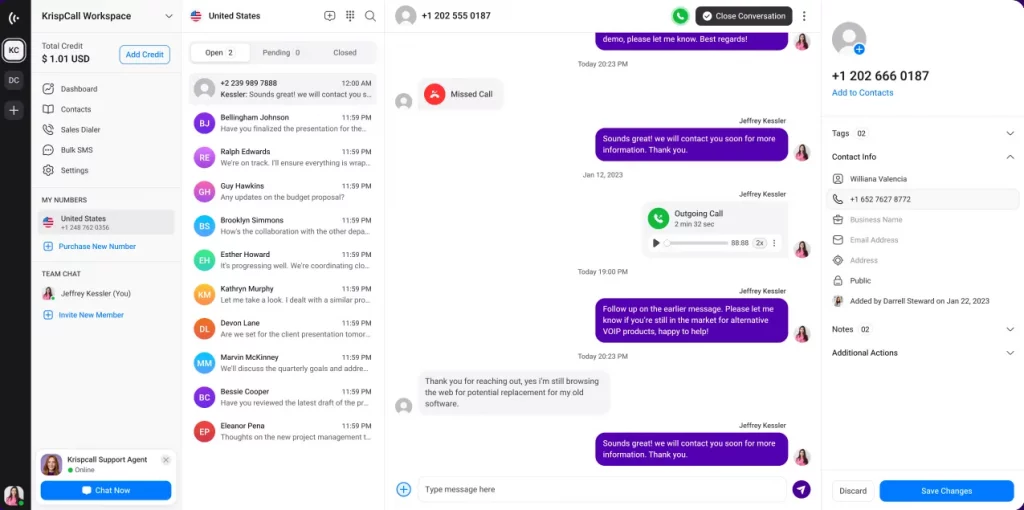
Why use KrispCall for sending Automated Voicemail?
Utilizing KrispCall for sending automated voicemails offers several benefits:
- Efficiency: KrispCall’s platform is designed to streamline communication processes, allowing for the efficient sending of automated voicemails. It saves time and resources for the business.
- Convenience: The user-friendly interface of KrispCall makes it easy for businesses to set up and manage their automated voicemail campaigns. The platform is designed for convenience, ensuring a smooth experience for users.
- Customization: It provides customization options, allowing businesses to tailor their automated voicemails according to their specific needs. It helps to align with the brand identity and messaging strategy.
- Cost-Effectiveness: By automating voicemail processes with KrispCall, businesses can reduce costs associated with manual efforts and enhance overall cost-effectiveness in their communication strategies.
- Time-Saving: Automation through KrispCall enables businesses to save time on repetitive tasks associated with voicemail delivery, allowing the team to focus on strategic aspects of communication.
What Customers are Saying about KrispCall Voicemail System
“KrispCall is a great fit for our large business. It has an amazing dashboard and quick purchasing system for UK numbers which allows us to do our job much faster. Before we started using KrispCall, we were facing challenges in efficiently managing the numerous phone numbers we utilize for our operations. Now, it’s no longer a problem since we can easily manage all the numbers in a single workspace. The payment process is also very crystal clear. We know the costs associated with obtaining the phone numbers before the purchase, and this transparency has greatly helped us in planning our budget more effectively.“
Final Words
Wrapping up, you can create proper business voicemail greetings by following voicemail etiquette guidelines discussed in this article😊. Ensure your message is concise, includes essential details, and expresses gratitude for the caller’s time.
The first voicemail you leave is your chance to make a great impression🥰. So, take time to create a polite voicemail message that stands out and sets a positive tone for your communication.
Remember, a thoughtful approach to voicemail etiquette not only shows professionalism but also leaves a lasting impact on your business relationships🤝. So, go ahead, ace those voicemail practices, and keep your communication game strong!
FAQ
- Why is voicemail etiquette important for businesses?
Businesses need to create a positive first impression, build trust and confidence, enhance brand image, increase customer satisfaction, and foster long-term relationships.
- How can I ensure my voicemail messages are clear and concise?
Start with a brief greeting, clearly state your purpose, speak slowly, avoid unnecessary details, and provide a clear call to action.
- Is it important to update voicemail greetings regularly?
Yes, regular updates ensure callers receive current information, demonstrate professionalism, and contribute to a positive customer experience.

